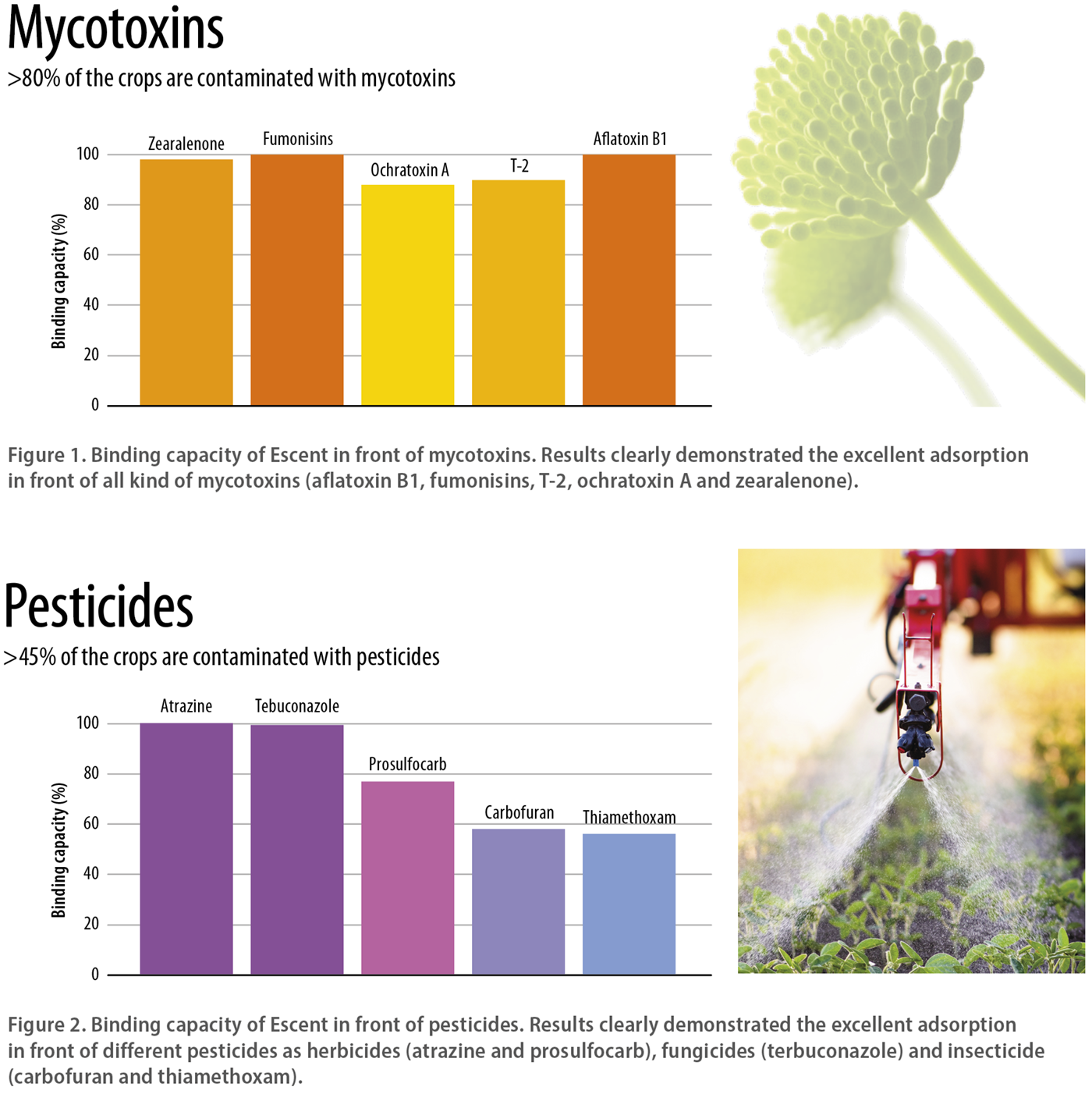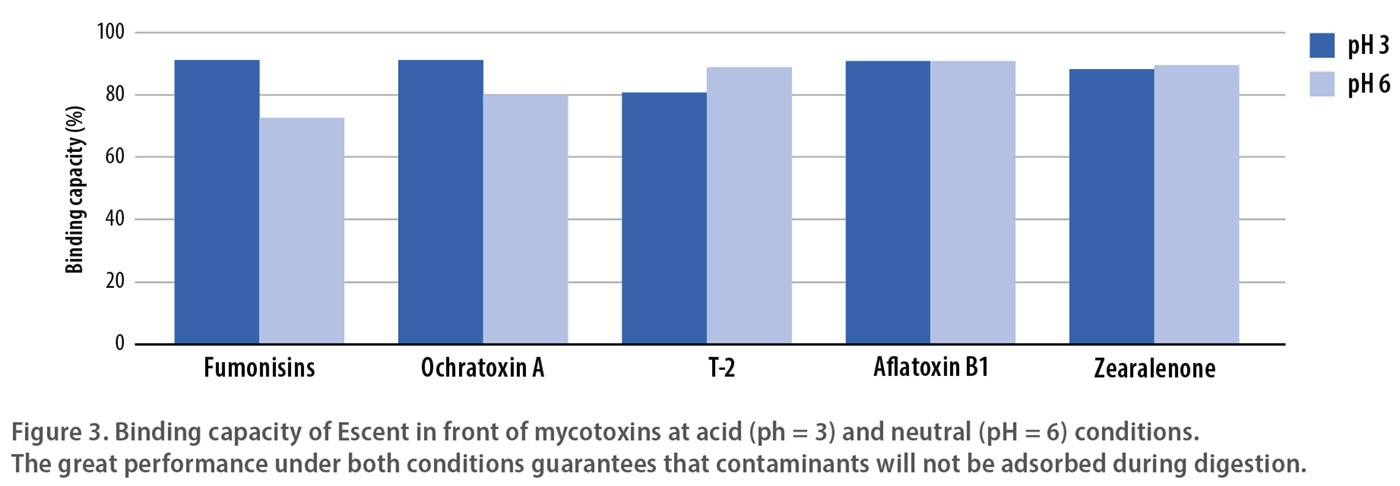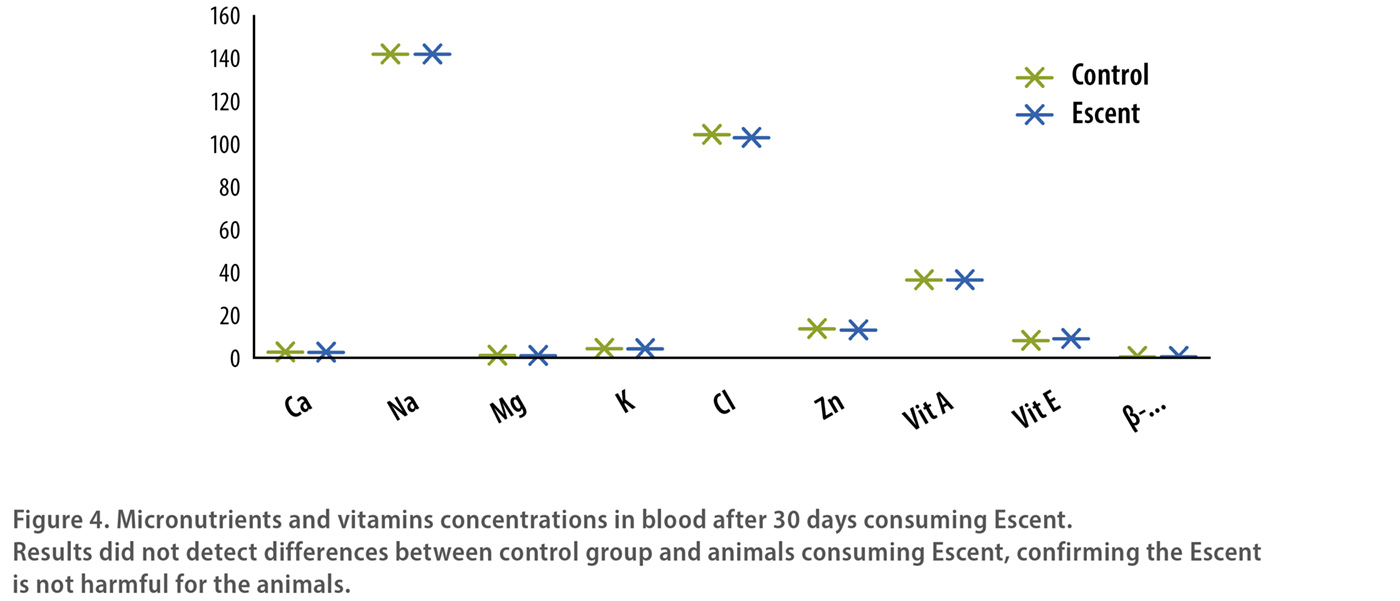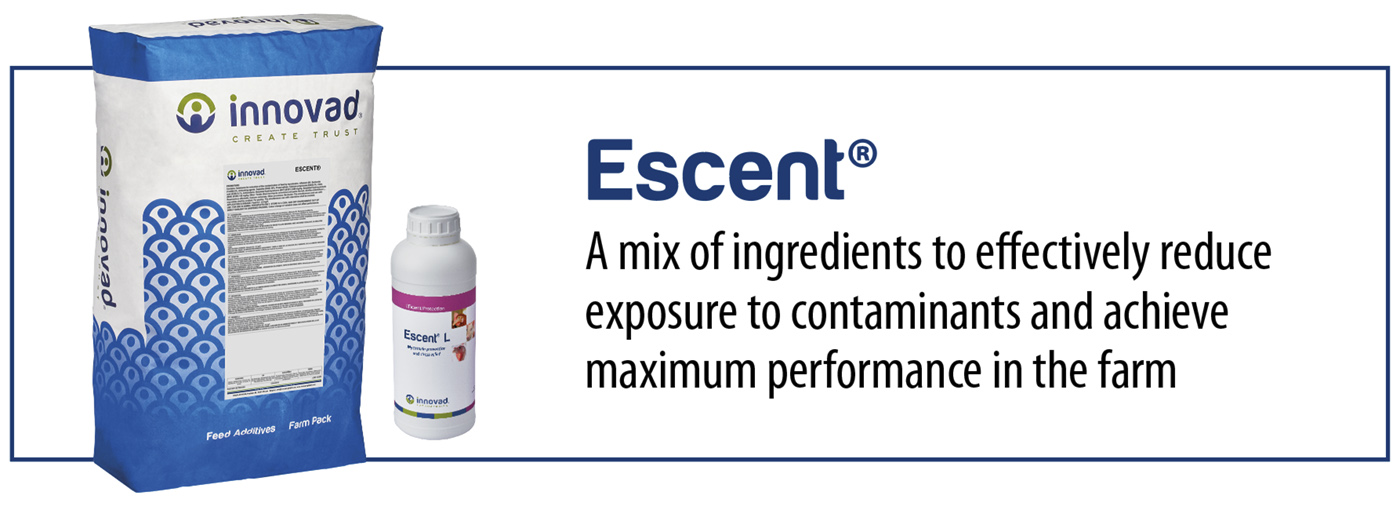Chemical contaminants are substances that are unintentionally present in grains and feed, stemming from various stages of production, processing, or storage. Some can also result from environmental contamination. The most relevant contaminants of concern are pesticides and mycotoxins, and their detection in feed can vary depending on factors such as geographic location, crop types, and agricultural practices.
-
Mycotoxins: These are toxic compounds that are naturally produced by certain types of fungi, primarily Fusarium, Penicillium and Aspergillus. It is considered that over 80% of crops are contaminated with mycotoxins. Aflatoxins, deoxynivalenol, fumonisins and zearalenone are the most well-known mycotoxins, causing a wide range of symptoms depending on mycotoxin type and concentration.
-
Pesticides: The specific pesticides detected in animal feed can vary depending on factors such as geographic location, crop types, and agricultural practices. The most frequently detected pesticides are herbicides, accounting for approximately 50% of all pesticides used globally. Scientific surveys indicate that over 45% of crops are contaminated with pesticides.
To reduce chronic exposure to contaminants, feed additives known as detoxifiers, can be used. Innovad offers a scientifically proven solution called Escent®, demonstrating excellent broad-spectrum binding activity, irreversible binding to the toxin and high specificity.
Broad-spectrum detoxification
Current detoxifiers are not limited to aflatoxin and for this reason Escent® delivers excellent results against all kinds of mycotoxins such as fumonisins, zearalenone, and trichothecens (Figure 1). Futhermore, it exhibits magnificent adsorption capabilities for other frequent contaminants, including herbicides (atrazine and prosulfocarb) and fungicides (terbuconazole) (Figure 2).

Irreversible binding
Results from binding studies conducted at both acid and neutral pH levels confirm the creation of irreversible bonds between Escent® and contaminants (Figure 3). Consequently, this ensures that the adsorption of contaminants is prevented throughout the entire intestinal tract.

Specific binding
Some binders have the potential to adsorb other molecules which could be important nutrients for animal performance, such as vitamins. Therefore, a binder must show specificity, adsorbing only contaminants and not beneficial nutrients. Analysis of micronutrients and vitamins in the blood after 30 days consuming Escent® had the same concentrations as the control group (Figure 4). This confirms Escent®’s specificity for contaminants without causing harm.

Conclusion
In addressing the challenge of reducing exposure to chemical contaminants in grains and feed, Escent® emerges as a highly effective, irreversible and specific solution. By targeting a broad spectrum of mycotoxins and pesticides, Escent® demonstrates its versatility in combating various contaminants and stands as a key ally in safeguarding animal health.
